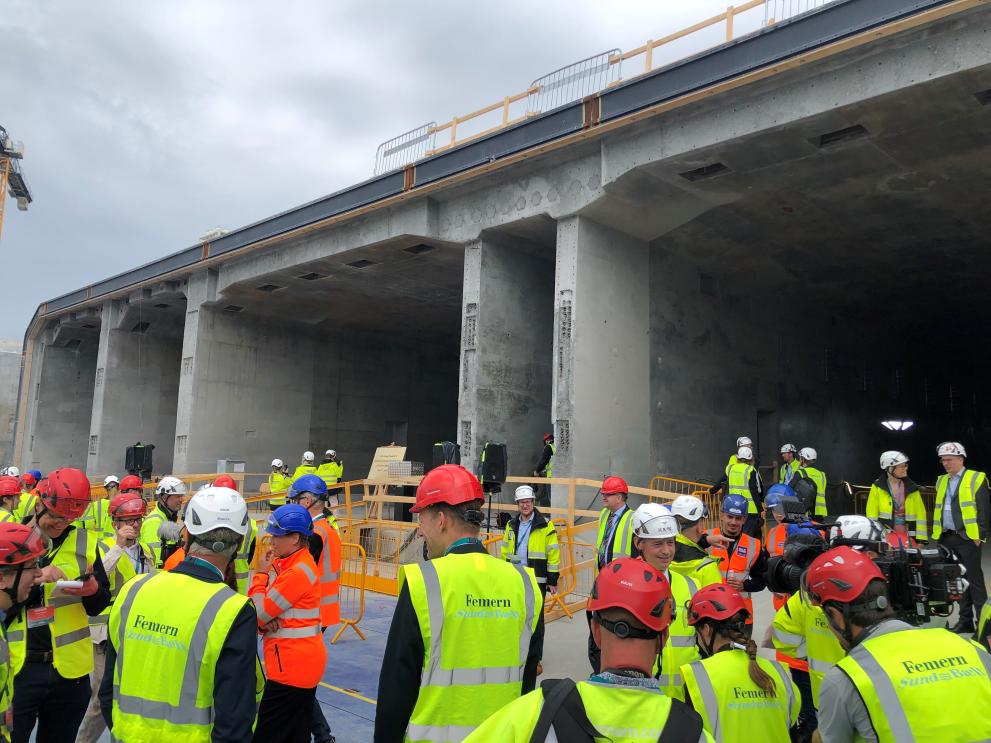
On Monday 17 June 2024, the Fehmarnbelt Tunnel project - the undersea road and rail tunnel linking Germany and Denmark - celebrated the inauguration of its first tunnel element. The element is the first of the 79 standard elements, all produced at the tunnel element factory in Rødbyhavn on Lolland. Its immersion in the tunnel trench under the sea is expected to take place later this year.
The Fehmarnbelt tunnel is one of Europe’s largest transport infrastructure projects to date, the construction started in June 2020 and is being co-financed by the CEF Transport programme with over €1 billion.
The 18 km-long immersed tunnel will connect Rødbyhavn on Lolland in Denmark with Puttgarden on the island of Fehmarn in Germany. It will create a green ‘shortcut’ and the fastest route between Scandinavia and the rest of Europe. The tunnel will consist of a two-lane motorway in each direction and two electrified rail tracks. Driving through the tunnel will take 10 minutes by car and train rides will be of only 7 minutes. The Fehmarnbelt tunnel is expected to be completed in 2029.
The works concerning the rail part of the tunnel are being supported by EU funding of the Connecting Europe Facility’s (CEF) transport sector, both under CEF I and CEF II:
CEF funding is being used to build the tunnel element factory, the tunnel portals and the interface with the hinterland rail connection, the tunnel trench as well as two transformer stations in Denmark and Germany respectively. Monitoring the construction’s environmental impact is also part of the funding’s scope.
Details
- Publication date
- 30 July 2024
- Author
- European Climate, Infrastructure and Environment Executive Agency
